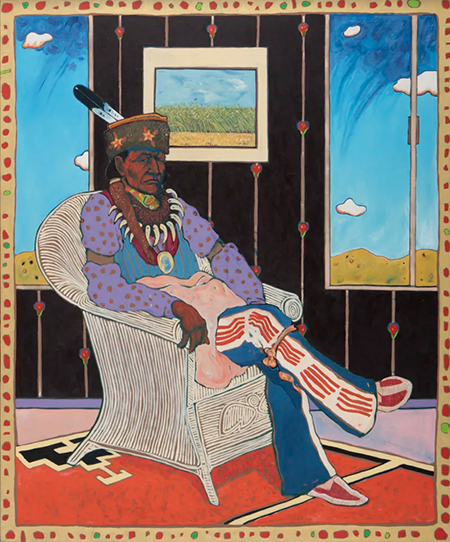
Continuing through April 15, 2018
The paintings, sketches and woodblock prints in “Of God and Mortal Men” comprise a vital contribution toward dispelling stereotypes about “Native American art.” T.C. Cannon, despite his short professional life in the ‘70s, sublimely demonstrated what it means to transcend labels. Like the work of one of his teachers, Fritz Scholder, Cannon’s bold and brash portraits of Native Americans reverberate with commentaries on contemporary life as easily as they insert historical and cultural references. A prime example is “Collector #5 (Man in Wicker Chair),” in which a Pawnee chief in traditional garb sits unperturbed in a room decorated with a Native rug, a van Gogh print and floral wallpaper, the wicker serving as a possible reference to Cannon’s Army stint in Vietnam. The artist’s signature motif of windows framing blue skies and stylized white clouds rounds out the composition. Cannon (Kiowa/Caddo) frequently sought to portray the strength and determination of Native women, evident in a work such as “Woman at the Window,” with the unflinching gaze of its subject and the interplay of vibrant colors.
The museum notes that Cannon is often referred to as the “James Dean” of the American Indian art world. Like Dean, Cannon was famously charismatic, deeply gifted and lived a short life, succumbing to a car accident at 31. Only a dozen or so paintings are on view, but they argue for Cannon as an important figure in redefining Native art.
